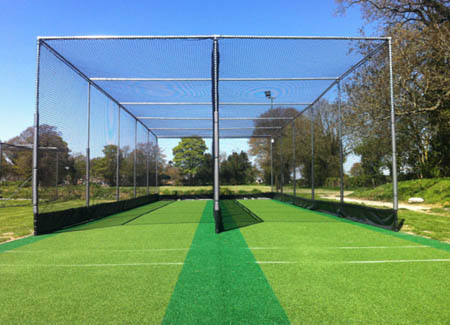
total-play helps clubs make the most of funding
17th July 2014
It’s been a busy year so far for cricket playing surface specialist total-play Ltd. The team has been working on natural and non-turf projects across the country; ranging from pre-season maintenance tasks to the installation of brand new non-turf facilities for matchplay and practice – as well as a number of refurbishment projects.
What Business Development Manager James Coney has noticed recently, however, is the sheer number of different sources from which clubs are generating funds for their projects. He says:
“Traditionally, the majority of funding for grass roots cricket projects has come from the ECB or Lords Taverners – with Sport England streams also a popular option. However, this year we’ve seen a huge rise in the number of projects funded by alternative streams. ECB, Lords Taverners and Sport England still feature regularly but we’ve also seen Biffa Award, SITA Trust, Local Authority Funding, Vinidor Credits, Section 106 contributions and donations from local charities and trusts all cropping up more frequently in the funding mix. Interestingly, we’ve also seen a number of self-funded projects where club members have worked hard raising their own funds.”
The fact that clubs seem to be winning funds from increasingly diverse sources can only be good news for those with a project on the horizon. However, whatever funding streams clubs decide to target there is no substitute for doing your homework and submitting a comprehensive, well evidenced application – as James explains:
“The basis of any funding application is to put forward a good case for need and balance this with a well thought-out solution. Whatever funding stream you decide to go for, you really need to do your research and ensure that you fit the criteria they set out before applying or you’ll only be disappointed. There are, however, a series of key steps that will give you a good grounding for any funding bid.
“First you’ll need to put together a Cricket Development Plan – outlining exactly how your proposed project meets the criteria set by the funding guidelines. This will be followed by a Project Plan – detailing how the project itself will be carried out, from preparation through installation to completion. You’ll then need to formulate a Business Plan – including income and expenditure and highlighting the project’s future sustainability. Finally, a detailed Funding Application will need to be submitted – most funding will require you to complete and in-depth application form giving full details of your club, business or organisation to help evidence your eligibility. Going through the steps prior to this will help ensure you have all the information –and evidence – you require.
“Another key element of the funding application is to show that you have researched solutions on the market. It’s highly likely that you will be expected to provide information from several prospective suppliers detailing cost, specification and implementation of their proposed solution. Any good, experienced supplier or contractor should be able to provide a wealth of advice on construction; highlighting best value to help create a realistic option, offer intelligent engineering solutions and have a clear understanding of the funding process themselves.”
Back to news










